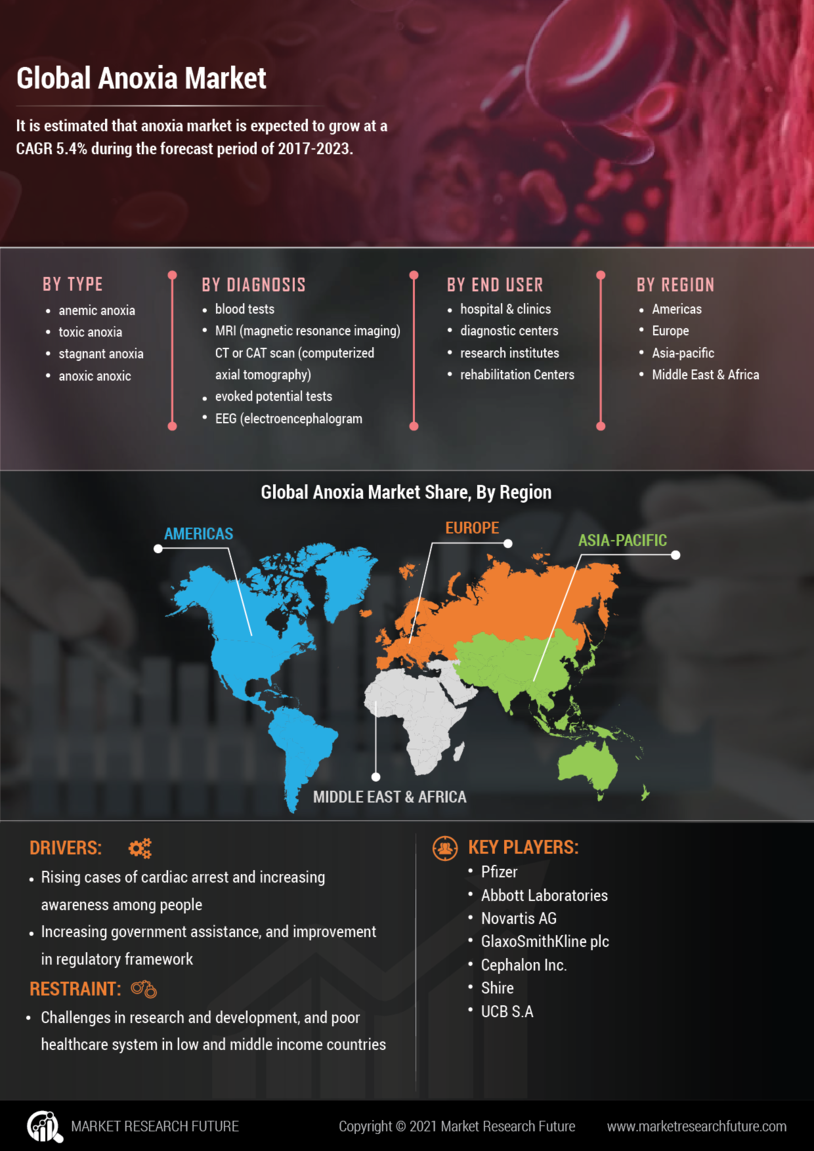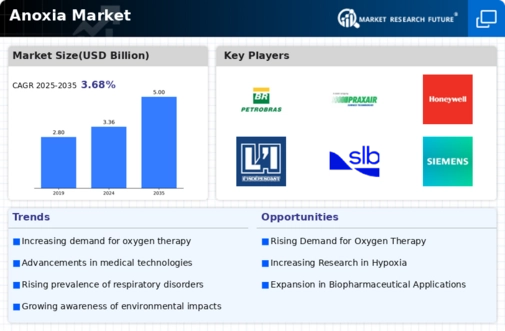Market Trends and Projections
Expansion of Aquaculture and Fisheries
The expansion of aquaculture and fisheries plays a pivotal role in shaping the Global Anoxia Market Industry. As global demand for seafood continues to rise, aquaculture practices are increasingly adopted to meet this need. However, intensive aquaculture operations can lead to localized anoxic conditions due to nutrient loading and organic waste accumulation. Consequently, there is a pressing need for effective management strategies to mitigate these impacts. The market is expected to benefit from innovations aimed at enhancing oxygen levels in aquaculture systems, thereby supporting sustainable production. This dynamic is likely to contribute to a compound annual growth rate of 3.68% from 2025 to 2035.
Rising Incidence of Hypoxic Conditions
The Global Anoxia Market Industry experiences a notable increase in demand due to the rising incidence of hypoxic conditions across various environments. Hypoxia, characterized by insufficient oxygen levels, is becoming more prevalent in aquatic systems, particularly in coastal areas. This phenomenon is often linked to nutrient pollution and climate change, which exacerbate the depletion of dissolved oxygen. As a result, industries such as aquaculture and fisheries are increasingly seeking solutions to mitigate the effects of anoxia, thereby driving market growth. The Global Anoxia Market is projected to reach 3.36 USD Billion in 2024, reflecting the urgent need for effective management strategies.
Technological Advancements in Monitoring
Technological advancements in monitoring and detection systems significantly contribute to the growth of the Global Anoxia Market Industry. Innovations in sensor technologies and data analytics enable real-time monitoring of oxygen levels in various environments, including marine and freshwater ecosystems. These advancements facilitate timely interventions to prevent anoxic conditions, thereby protecting biodiversity and supporting sustainable practices. Furthermore, the integration of artificial intelligence in monitoring systems enhances predictive capabilities, allowing stakeholders to make informed decisions. As the market evolves, these technologies are expected to play a crucial role in addressing anoxia, potentially leading to a market valuation of 5 USD Billion by 2035.
Growing Awareness of Anoxia's Ecological Impact
Growing awareness of the ecological impact of anoxia is a significant driver for the Global Anoxia Market Industry. Stakeholders, including policymakers, environmental organizations, and the public, are increasingly recognizing the detrimental effects of anoxic conditions on aquatic ecosystems. This heightened awareness leads to greater advocacy for sustainable practices and the implementation of restoration projects aimed at improving oxygen levels in affected areas. As educational initiatives proliferate, the demand for solutions to combat anoxia is likely to rise, fostering innovation and investment in the sector. This trend suggests a robust growth potential for the market as ecological concerns gain prominence.
Increased Regulatory Focus on Environmental Protection
The Global Anoxia Market Industry is influenced by an increased regulatory focus on environmental protection and sustainability. Governments worldwide are implementing stringent regulations aimed at reducing nutrient runoff and improving water quality in response to the growing concerns over anoxia. These regulations often require industries to adopt best management practices and invest in technologies that minimize environmental impact. Consequently, businesses are compelled to seek solutions that align with regulatory standards, thereby driving demand within the market. This trend is expected to sustain the market's growth trajectory, as compliance with environmental regulations becomes increasingly critical for operational viability.









